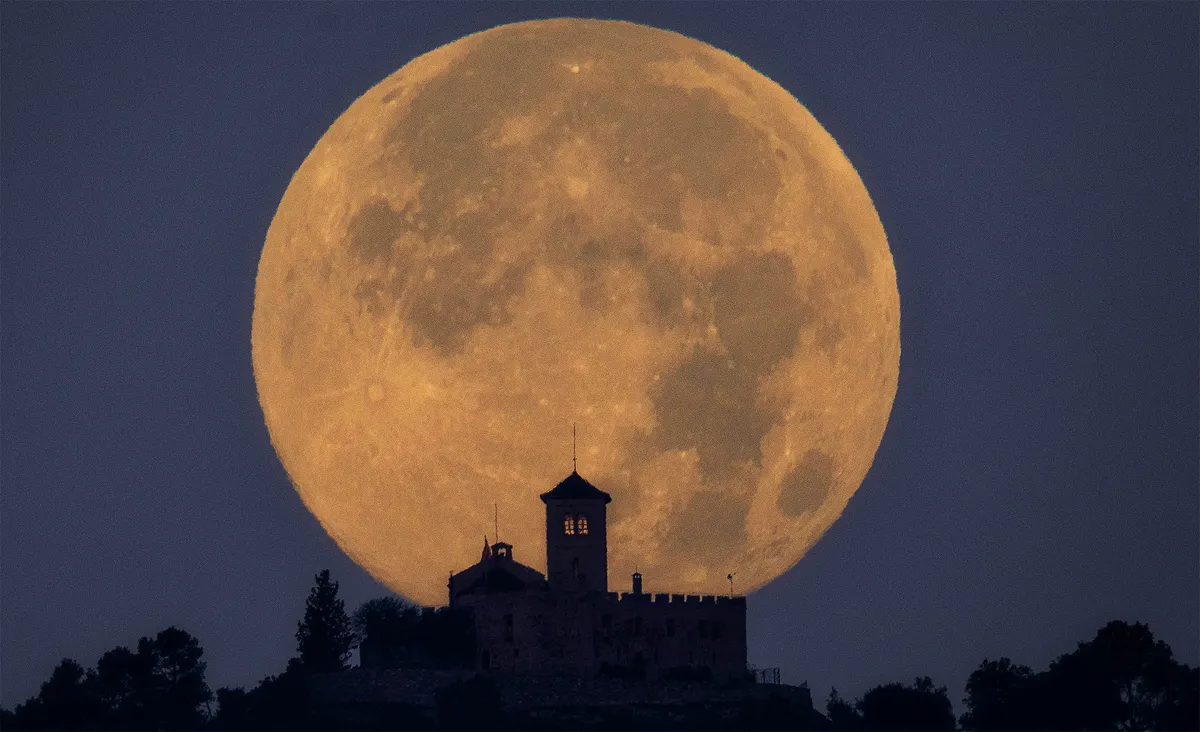
If you step outside this week and gaze toward the eastern horizon after sunset, you might notice the moon shining a little brighter than usual. This isn’t your imagination playing tricks on you; it’s one of the closest supermoons we have seen in years. Known as the Beaver Moon, this month’s full moon will be the largest and brightest of 2025. What’s more, it’s the closest the moon will come to Earth all year, and you won’t need a telescope or a dark sky to enjoy its splendor.
The moon’s orbit isn’t a perfect circle; instead, it travels in a slightly stretched oval. This means there are times when the moon is nearer to Earth, known as perigee, and times when it’s farther away, called apogee. When a full moon occurs near the perigee, astronomers refer to it as a supermoon. This phenomenon results in a full moon that appears larger and brighter due to its proximity to our planet. According to NASA, a supermoon can look up to 14 percent bigger and 30 percent brighter than the faintest full moon of the year. The upcoming Beaver Moon will come within just under 222,000 miles of Earth, making it the closest since 2019. It is the second of four supermoons that will occur from early fall through 2026.
The Beaver Moon will reach its peak fullness at 8:20 a.m. EST on Wednesday, November 5. However, the best time for viewing in North America will be at dusk on Thursday, November 6. On Thursday evening, the moon will rise approximately 30 minutes after sunset, glowing low in the eastern sky. Astronomer Lawrence Wasserman of Lowell Observatory has noted that tides may be slightly higher during a supermoon because of the moon’s proximity to Earth, although the difference is often not very noticeable. Tides typically reach their peak during full and new moons when lunar and solar gravity align. A supermoon enhances this alignment, causing the ocean to respond with higher tides.
Every full moon carries a traditional name linked to seasonal changes. In North America, the November full moon is often referred to as the Beaver Moon, a nod to the time when beavers are busy constructing their lodges and preparing for winter. This full moon in November has also been called the Hunter’s Moon and the Frosty Moon, names that reflect the lifestyles of early North American and European communities. Long before the advent of electricity or printed calendars, people relied on these lunar cycles to mark time, plan harvests, and ready themselves for the cold months ahead.
While supermoons gain significant attention, the science behind them serves as a reminder of the precise movements of Earth and its moon. Their gravitational connection shapes ocean tides, influences the planet’s tilt, and creates a dependable cycle that has guided navigation, agriculture, and calendars for centuries. The Beaver Moon will reach its full illumination just nine hours after its closest point in orbit, showcasing the remarkable precision of this celestial system. These patterns are so consistent that scientists can predict every full moon centuries into the future, down to the minute.
The biggest full moon of 2025 won’t bring about unusual tides or dramatic changes, but it does offer something simpler: a steady light that has watched over Earth for as long as humanity has been observing it. For thousands of years, people have looked up at the same brilliant moon, using it to measure time, plan for the upcoming seasons, and mark the passage of generations. Long before telescopes or calendars existed, the full moon connected human life to the universe. It serves as a reminder that even in an age of technology and discovery, nature continues to govern the passage of time.
——
Like what you read? Subscribe to our newsletter for engaging articles, exclusive content, and the latest updates. Check us out on EarthSnap, a free app brought to you by Eric Ralls and Earth.com.